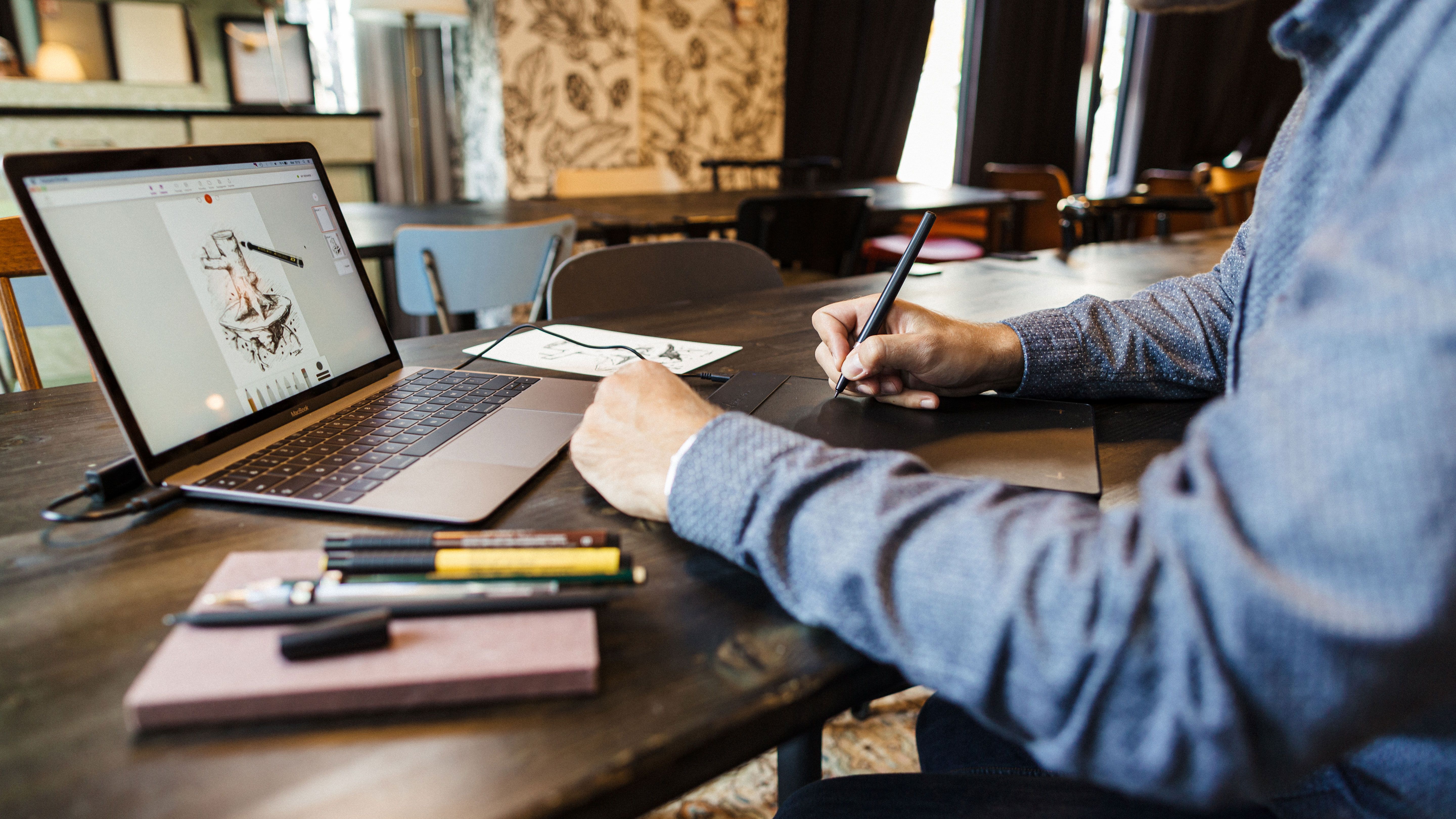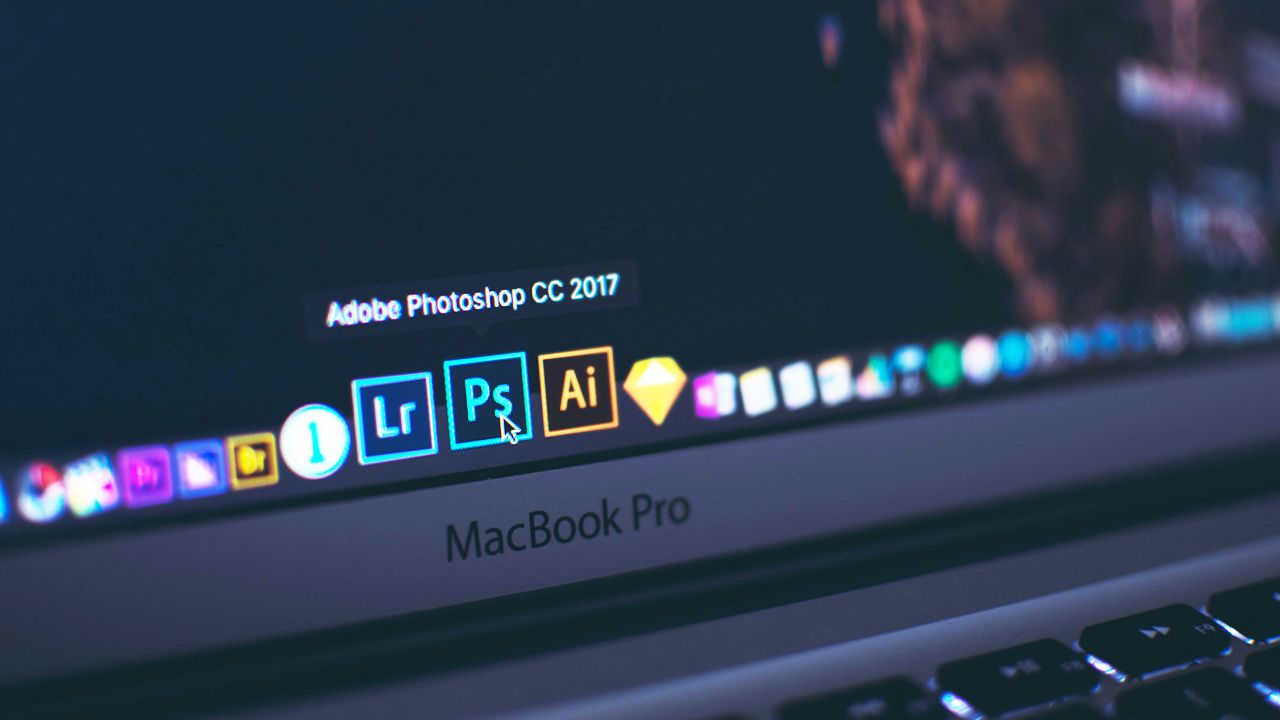
Editing photos with a graphic tablet.
Photo retouching is a habit that all photographers have in order to offer a bright image that is much more pleasing to the eye than the original one. If it is possible to make these modifications with the mouse using a specialized editing software, the use of a graphics tablet will make your work much more precise and fast, and will allow you to obtain a refined and delicate result for your retouching.
Why use a drawing tablet for photo editing?
With Instagram and the popularization of photo software and applications offering to use ready-made filters, and basic corrections offering to resize images, manage brightness and sharpness, as well as edit other parameters in order to correct images in a global way, users may wonder what is the point of using a specific software and a drawing pad to make these adjustments. The reason is very simple, the filters and options of basic software, such as Photoshop Elements for example, may be suitable for quick retouching, but this photo processing remains global, and does not allow to work precisely on each aspect of the image. As soon as you start to want to enhance your photos in a more professional way, and to obtain a more elegant and remarkable result, you need to be able to perform numerous specific editing operations to correct the image in a detailed way.

Some people will think it's photo manipulation, or even photo-montage, but we mustn't forget that the "vintage" black-and-white photos, which they generally like so much, also had a post-processing and a manual retouching done in the darkroom. It is thus to keep this precision in the photo edition, that the use of a graphic tablet becomes interesting, in order to make some retouching and to edit the photos more rapidly. You will be able to target the important points of the photograph with your stylus, and correct the image, not in a global way, but by selecting each element independently of the others, in order to lighten, darken, or perform any advanced effects, on a fragment of the shot in particular. This makes image editing easier and faster, and working with the stylus feels much more natural than working with a mouse or trackpad. For these reasons, professional photographers, as well as experienced amateurs, can no longer do without their drawing tablet for image processing.

Which graphic tablet to use?
The drawing tablet is therefore a very interesting tool for photographers to edit a photo quickly, and in a more intuitive way. But a large number of graphic tablets using different technologies, and a different user interface according to each model, are available, and making the right choice of graphic device, according to its use, requires to think carefully about its purchase. While tablets with integrated screens can be interesting and more intuitive to use, they are often not suitable for the majority of users, as they are terribly expensive. More basic tablets, without screen, compatible with most computers, and with the best photo editing applications, will be more suitable for beginners or photography enthusiasts. The important thing is to opt for a drawing tablet that is easy to use and preferably compatible with Photoshop and the Adobe suite, so as not to get stuck when choosing your image editing software. Having a few shortcut buttons on your device is also important, to have quick access to frequently used software settings and options, and to make your tablet easier to use. For those who want more versatility, for example to draw on the picture, to make a poster, a drawing tablet like the ISKN Repaper can be interesting. If this one proposes a mode without traditional screen, usable with a digital pen, in order to retouch its photos, you can also draw easily, on a sheet of paper affixed directly on the tablet, and with your favorite pencil, thanks to the magnetic ring, placed around this one, retranscribing the movements and the inclination of your pen. This allows you not to be disturbed by the hand-eye coordination between the tablet and the computer screen, sometimes difficult on drawing tablet without standard screen. You draw here, just as you would on a traditional drawing pad.

Which photo editing software to use?
Many free and paid software are available today, under Windows or Mac OS X, and although using an image processing software is essential today, one can quickly get lost among this abundance of choice. However, some stand out from the crowd and are favored by a large number of users. Among the best photo editing software, we find for example the Adobe Creative suite with its software Adobe Photoshop and Adobe Lightroom. If the first one is interesting for its versatility and its numerous brushes and options, which can be used for image retouching as well as for graphics or illustration, the second one is really specialized in photographic retouching, and is regularly used by professionals. Moreover, it is easy to find tutorials on the Internet, and these programs are compatible with the majority of graphic tablets on the market. For beginners and amateurs who do not wish to invest in a paid software, they can turn to Gimp, the free equivalent of Photoshop, or Photofiltre, this easy-to-use photo software that allows you to retouch your pictures with a really specialized software, as you would do with Lightroom. Finally, those who prefer to work on the go will appreciate an image editing software like Photoshop Express, this application being usable on iPad as well as on Android phones.

Some photo editing tips.
Crop the image.
To attract the attention on a point of interest or to refocus the photo on the main element or subject, the cropping of a photo is sometimes important to improve the final result of your shot. Modifying the photo and cropping it in this way is an interesting way to enhance it, while removing unwanted elements quickly. Resizing an image can also be used to remove distortions or vignetting effects that some lenses (especially those using a large zoom) cause in the photograph.
Correcting the exposure and improving the colors.
Exposure and color management are often difficult for the photographer to achieve live, even with proper white balance, especially when shooting in poor light conditions. Fortunately, image processing software can be used to retouch and improve a photo considerably. To do this, it is not advisable to use predefined options and effects that apply to the entire photo. Instead, reproduce the layer of your image, carefully select elements whose exposure and color (via saturation, for example) need to be modified, and once the editing is done, finally merge these new layers with the main image, choosing the right blend mode, to finish your work.

Remove imperfections.
An unsightly spot on a portrait, an unattractive element on a landscape, significant pixelation... It can regularly happen that an imperfection slips into your photo. It is then possible to treat the image and add effects in order to make disappear these unpleasant elements that you wish to remove. Several techniques exist. If for pixelation, you can add a Gaussian blur photo effect (to be used with parsimony), or simply reduce your canvas to compensate for a low resolution, in order to reduce the imperfections, the duplication stamp is a solution to make precise and discreet photo retouching. Then apply these effects to each desired element to dissipate or modify it.

Export your file.
Once you have finished your editing, you can finally export your picture. If the JPEG is the most commonly used, and is very effective to share and integrate your photos on the Internet, it has the disadvantage of compressing your file and losing information to it. This will result in deteriorating your photograph by about 4 to 5% of its quality. To avoid this, you can export your file in RAW format, which corresponds to the digital negative. This is the best possible quality for a photograph. However, the file weight is extremely heavy, and, except for professional use, it can be complicated to use it afterwards. Finally, if you wish to modify your files with the Adobe Creative suite, the PSD format allows you to keep the quality, modify and reshape your photos countless times.
Mistakes not to be made.
The amateur and the beginner generally have the bad habit of wanting to edit their photos too much. This usually results in a distorted and often unattractive result. Wanting to remove too many imperfections or adding too much saturation, in order to bring out the colors, will bring an unnatural and undesirable touch to your shot. From the "doll's skin" effect to that of eyes bordering on a fluorescent color, remember that image processing must be done with finesse to avoid this type of inconvenience. In the same way, avoid ready-made filters, and avoid using the same effects over and over again. Each photo is unique and needs to be edited individually.

Editing isn't cheating.
Editing your photos has become easy with the right equipment. The graphic tablet can be of great help, especially for discreet editing, without changing the appearance of your photo. Thus, you do not cheat anyone, and keep the authenticity of your picture, while making it more attractive to the eye. It only remains for you to practice and learn the techniques of photo editing.

Discover more
Graphic tablet compatible with Photoshop.
Buying a quality drawing tablet requires a certain amount of money if you want to fully invest in digital drawing.
Discover and choose the best digital drawing software.
Using a drawing software is a compulsory learning process to create digital creations.
Comparison of the best graphics tablets.
When it comes to buying a drawing tablet that doesn't require hand-eye coordination, with the strokes taking shape directly in front of your eyes, as they would on a notebook or a conventional drawing pad, you can quickly get lost in front of the large number of devices available on the market.
Newsletter
Keep up to date with iskn news and events
Free standard delivery
for purchase over $80
30-day returns
on all products
Secure payment
with Stripe & PayPal
Pay in 4
with PayPal
Customer service
chat with us


